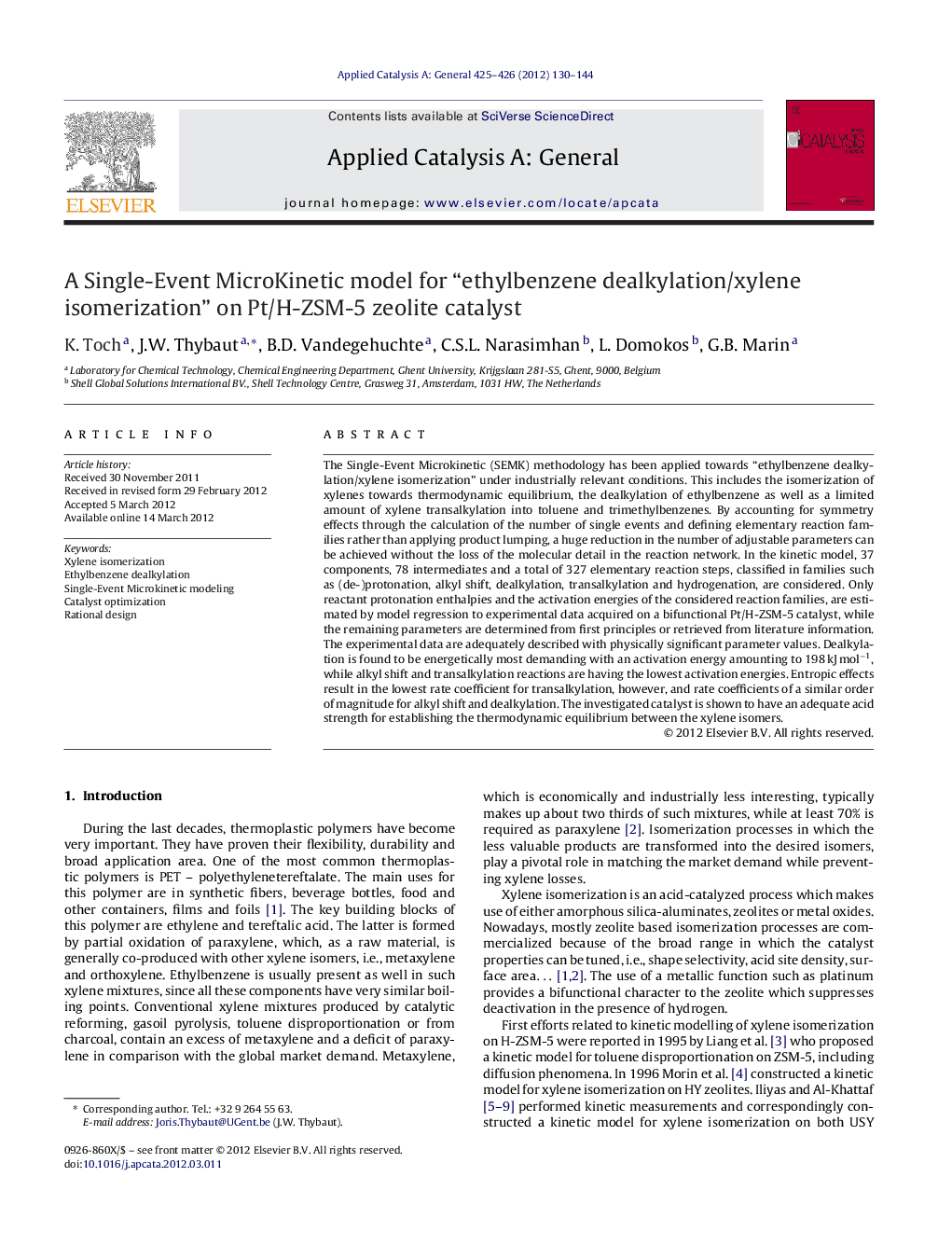| Article ID | Journal | Published Year | Pages | File Type |
|---|---|---|---|---|
| 40935 | Applied Catalysis A: General | 2012 | 15 Pages |
The Single-Event Microkinetic (SEMK) methodology has been applied towards “ethylbenzene dealkylation/xylene isomerization” under industrially relevant conditions. This includes the isomerization of xylenes towards thermodynamic equilibrium, the dealkylation of ethylbenzene as well as a limited amount of xylene transalkylation into toluene and trimethylbenzenes. By accounting for symmetry effects through the calculation of the number of single events and defining elementary reaction families rather than applying product lumping, a huge reduction in the number of adjustable parameters can be achieved without the loss of the molecular detail in the reaction network. In the kinetic model, 37 components, 78 intermediates and a total of 327 elementary reaction steps, classified in families such as (de-)protonation, alkyl shift, dealkylation, transalkylation and hydrogenation, are considered. Only reactant protonation enthalpies and the activation energies of the considered reaction families, are estimated by model regression to experimental data acquired on a bifunctional Pt/H-ZSM-5 catalyst, while the remaining parameters are determined from first principles or retrieved from literature information. The experimental data are adequately described with physically significant parameter values. Dealkylation is found to be energetically most demanding with an activation energy amounting to 198 kJ mol−1, while alkyl shift and transalkylation reactions are having the lowest activation energies. Entropic effects result in the lowest rate coefficient for transalkylation, however, and rate coefficients of a similar order of magnitude for alkyl shift and dealkylation. The investigated catalyst is shown to have an adequate acid strength for establishing the thermodynamic equilibrium between the xylene isomers.
Graphical abstractFigure optionsDownload full-size imageDownload high-quality image (116 K)Download as PowerPoint slideHighlights► C8 aromatics conversion is adequately modeled using single-event microkinetics. ► Combined entropic and energetic effects determine the product distribution. ► ZSM-5 exhibits optimal isomerization versus transalkylation behavior.
